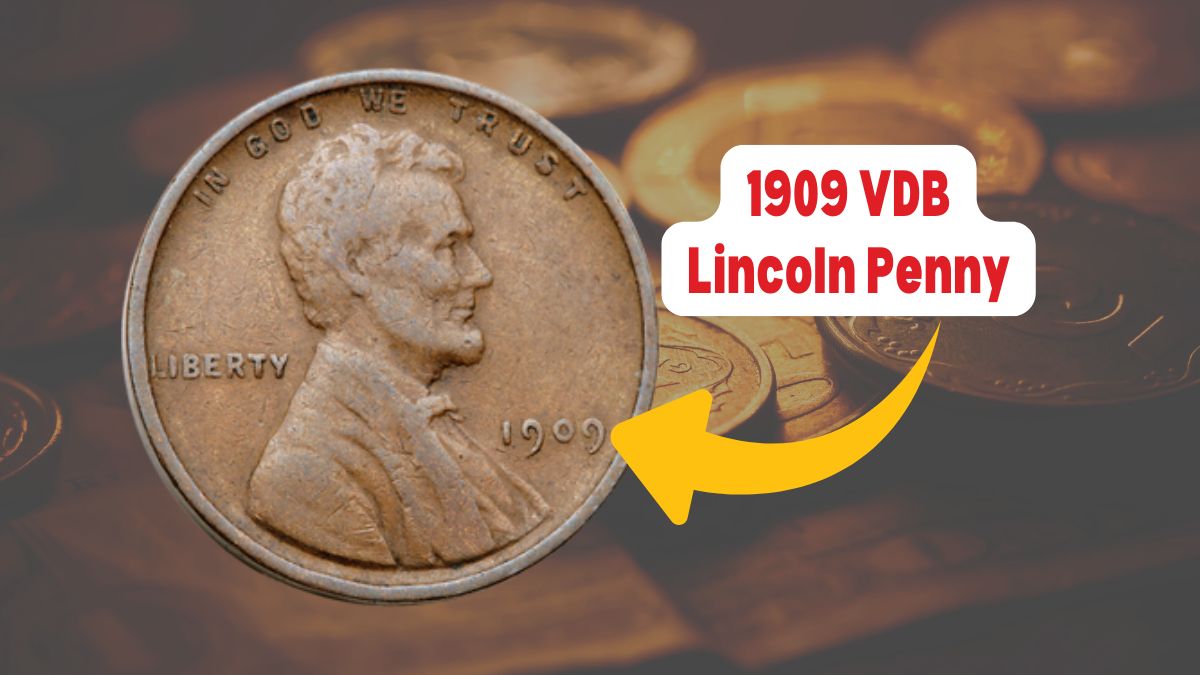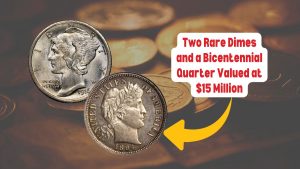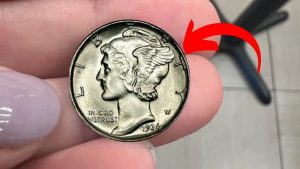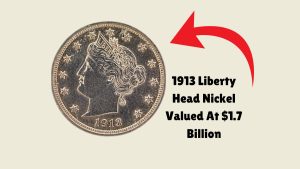The 1909 VDB Lincoln penny stands as a testament to numismatic artistry and historical significance. This coin, introduced to commemorate Abraham Lincoln’s 100th birth anniversary, has become a coveted piece among collectors, with certain variants fetching prices up to $200,000.
Historical Context and Design
In 1909, the U.S. Mint released the Lincoln cent, marking the first American coin to feature a president’s likeness. Designed by sculptor Victor David Brenner, the coin’s obverse showcases a right-facing portrait of Lincoln, with the inscriptions “LIBERTY” and the minting year.
The reverse displays two wheat stalks, symbolizing prosperity, and the denomination “ONE CENT.” Brenner’s initials, “VDB,” were initially placed prominently on the reverse, sparking public debate over their visibility. Responding to the controversy, the Mint removed the initials shortly after the coin’s release, resulting in limited mintage for the VDB-inscribed pennies.
Mintage Details
The 1909 VDB pennies were minted at both the Philadelphia and San Francisco facilities, with notable differences in production numbers:
| Mint Location | Mintage Quantity | Mint Mark |
|---|---|---|
| Philadelphia | 27,995,000 | None |
| San Francisco | 484,000 | S |
The San Francisco-minted 1909-S VDB penny, with its significantly lower mintage, is particularly rare and highly sought after by collectors.
Value and Rarity
The value of a 1909 VDB penny is influenced by factors such as mint mark, condition, and color designation (ranging from Brown to Red). The 1909-S VDB variant commands especially high prices:
| Coin Type | Condition Grade | Estimated Value Range |
|---|---|---|
| 1909 VDB (No Mint Mark) | MS60 – MS67 | $30 – $1,350 |
| 1909-S VDB | MS60 – MS67 | $2,200 – $175,000 |
In 2022, a 1909-S VDB penny graded MS67 Red sold for an impressive $168,000, highlighting the coin’s substantial value in top-tier conditions.
Notable Variants and Errors
Collectors also prize certain variants and error coins, which can significantly enhance a penny’s value:
- Doubled Die Obverse (DDO): This error features noticeable doubling in the inscriptions on the obverse. A 1909 VDB DDO penny in MS67 Red has been valued at approximately $14,000.
- Proof Coins: Proof versions of the 1909 VDB penny, produced in limited quantities, are highly sought after. A 1909 VDB Proof penny in PR63 condition is estimated at $14,747.
Identifying Authentic 1909 VDB Pennies
To verify the authenticity of a 1909 VDB penny:
- Mint Mark: For the 1909-S VDB penny, locate the “S” mint mark below the date on the obverse.
- VDB Initials: Examine the reverse side at the bottom center to find the “VDB” initials.
- Professional Grading: Consider having the coin evaluated by reputable grading services to confirm its authenticity and condition.
The 1909 VDB Lincoln penny is more than a mere coin; it embodies a piece of American history and numismatic heritage. Its unique design, coupled with limited mintage and intriguing variants, renders it a prized possession for collectors. Whether you’re a seasoned numismatist or a curious enthusiast, the 1909 VDB penny offers a fascinating glimpse into the world of rare coins.
FAQs
Why were Victor David Brenner’s initials removed from the 1909 penny?
The prominence of the “VDB” initials on the reverse sparked public criticism, leading the U.S. Mint to remove them shortly after the coin’s release.
How can I determine the value of my 1909 VDB penny?
The value depends on factors like mint mark, condition, and color designation. Consulting a professional coin appraiser or grading service is recommended for an accurate assessment.
What does the color designation (Brown, Red-Brown, Red) mean for copper coins?
These terms describe the coin’s coloration, influenced by its copper content and exposure over time. Red coins are typically more valuable due to their original luster.





I have a 1909 vdb penny should I have it certified or wait
I have on as well
I have lots of pennies from 1970*s till 200’s also quarters 1789 and 1989